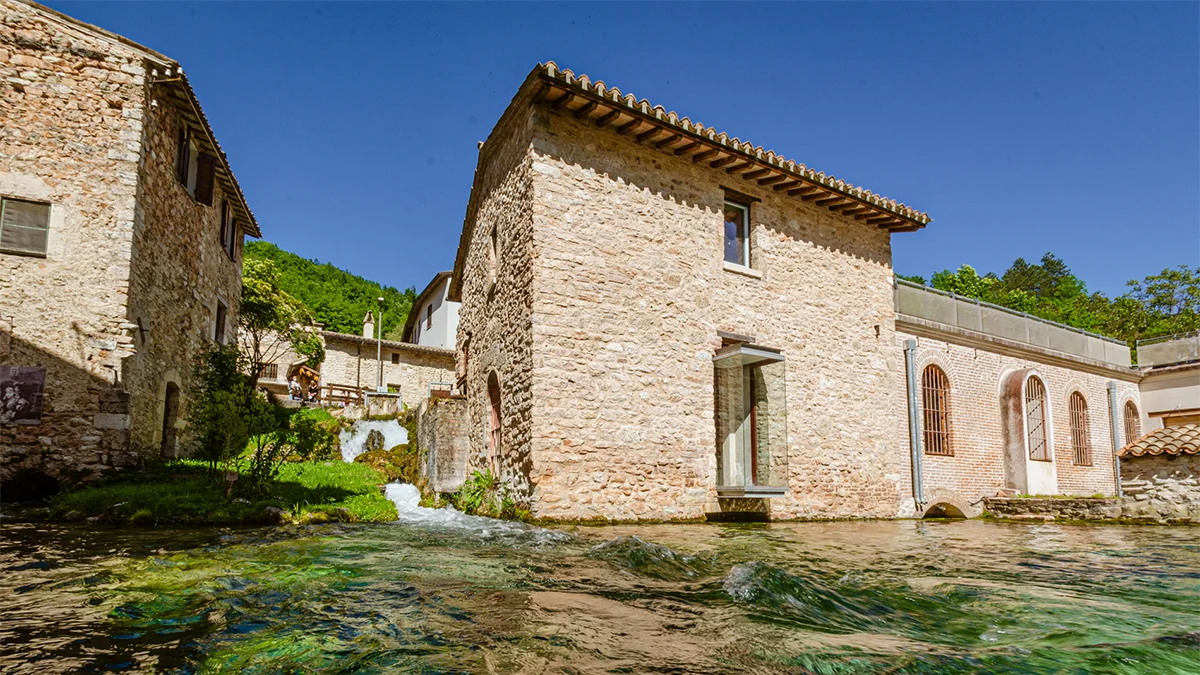Rasiglia is a small village in central Umbria, known for its network of canals, stone bridges, and flowing streams. Often referred to as the “Venice of Umbria”, it offers a peaceful atmosphere and an authentic glimpse into local life. In this article, we’ll explore Rasiglia’s history and practical tips for visitors.
A Brief History of Rasiglia
Rasiglia developed around the Capovena stream, a waterway that flows through the village and gives it its characteristic network of canals and small waterfalls. In medieval times, the flowing waters were essential for daily life, powering mills that produced flour, oil, and other local goods, shaping both the village’s economy and its architecture. Many of the stone bridges and traditional houses still standing today reflect this long history.
Rasiglia earned its nickname, the “Venice of Umbria”, because of its canals, bridges, and narrow streets mirrored in the water. The village has a calm, intimate atmosphere, ideal for strolling and photography.
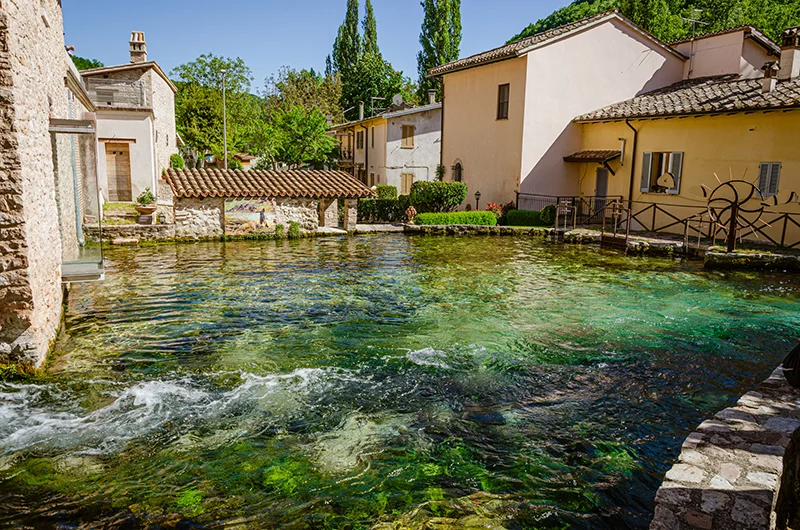
The Capovena stream continues just outside Rasiglia, where it joins the Menotre, which flows toward the nearby village of Pale. There, the water forms waterfalls and was historically used to power paper mills, producing paper for centuries. This connection highlights the importance of the stream not just for Rasiglia, but for the surrounding communities as well.
By the mid-20th century, Rasiglia’s population had declined, but local restoration projects preserved the canals, bridges, and historic houses, keeping the village’s character intact.
Discovering Rasiglia: Canals, Mills, and Village Life
Exploring Rasiglia feels like wandering through a village where water guides every step. Narrow, stone-paved streets wind along the water stream, leading visitors over small bridges and past traditional houses built close to the water. Each turn reveals charming canals, quiet corners, and the gentle sound of flowing water, creating an atmosphere that is both intimate and visually striking. Walking these narrow lanes allows visitors to fully appreciate how the village developed around its waterways.
One of the village’s highlights is the Mulino Silvestri, a historic watermill now transformed into a small museum. Inside, visitors can see the tools and machines that were once used to produce flour, gaining a tangible sense of how the Menotre stream powered the daily life of the village in the past.
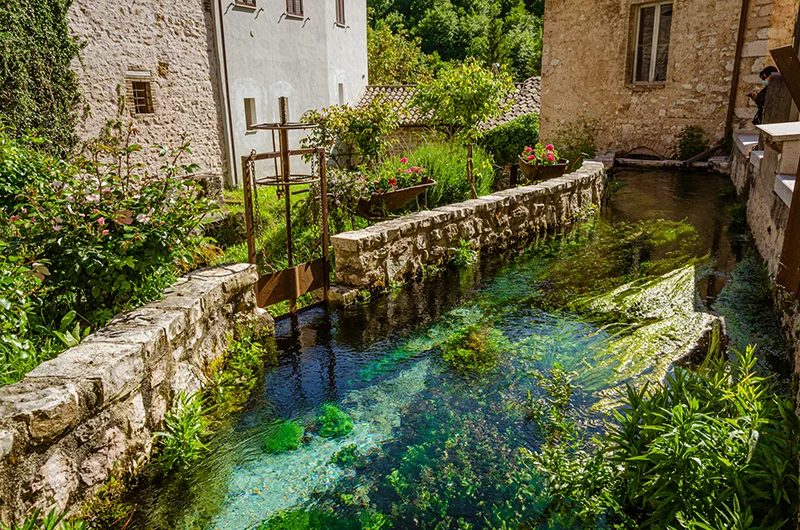
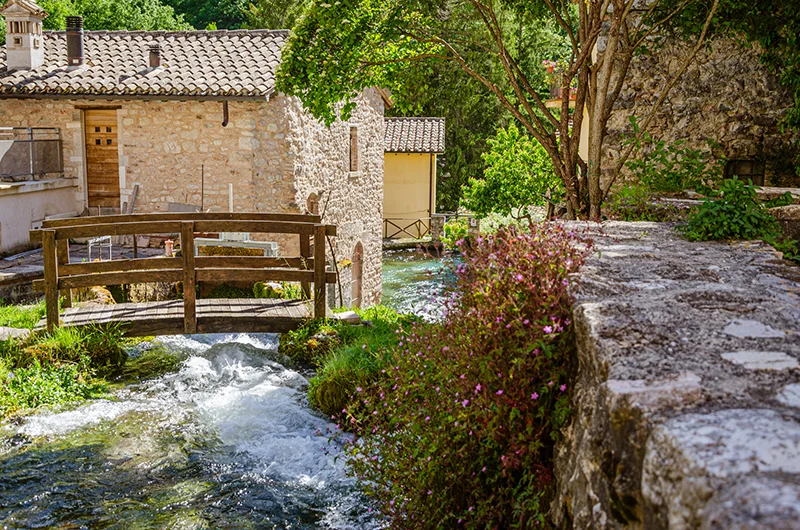
A short walk from the mill leads to the Museo Ex Lanificio Accorimboni, where the focus shifts from grain to wool. Here, traditional tools for processing wool are on display, and visitors can admire the museum’s most famous feature: the affaccio sulla Pescaia, a scenic viewpoint overlooking the water basin where the stream collects before continuing its flow. This spot perfectly illustrates how Rasiglia’s waterways have been central not only for milling but also for local crafts and industry.
Another evocative location in the village is the public washhouse, where generations of women washed clothes using clear waters. The stone basins and channels remain intact, offering a glimpse into the social and practical life of Rasiglia’s past. Walking here, it’s easy to imagine the village bustling with daily routines along the water’s edge.
Just above the village, the ruins of the Castello di Rasiglia stand as a reminder of the area’s medieval past. Built by the Trinci family, the castle once served as a strategic lookout and defensive structure. Today, visitors can see the remaining walls and foundations, enjoying a view over the village and the surrounding Umbrian countryside.
Tips for Exploring Rasiglia
Visiting Rasiglia (directions) offers a mix of natural beauty, history, and local experiences, but a little planning helps make the most of the trip. The village is most easily reached by car from nearby towns like Perugia, Spoleto, or Foligno. Roads are narrow and parking is limited near the village, so arriving early can make the visit more relaxed. The village itself is small, and exploring it typically takes only a few hours, making it an ideal stop for a half-day trip. Walking through Rasiglia is the best way to discover its charm, following the small lanes that weave along the Capovena stream.
When it comes to food and drink, Rasiglia offers several options for tasting local Umbrian products. There are a few osterie, bistros and small cafés serving sandwiches with regional cheeses, cured meats, and fresh bread. For craft beer enthusiasts, the village also has an artisanal brewery, Birrificio Fratelli Perugini, providing a modern twist on the traditional culinary scene. For those who prefer to bring their own food, there is a picnic area nearby where families and travelers can enjoy a meal surrounded by nature.
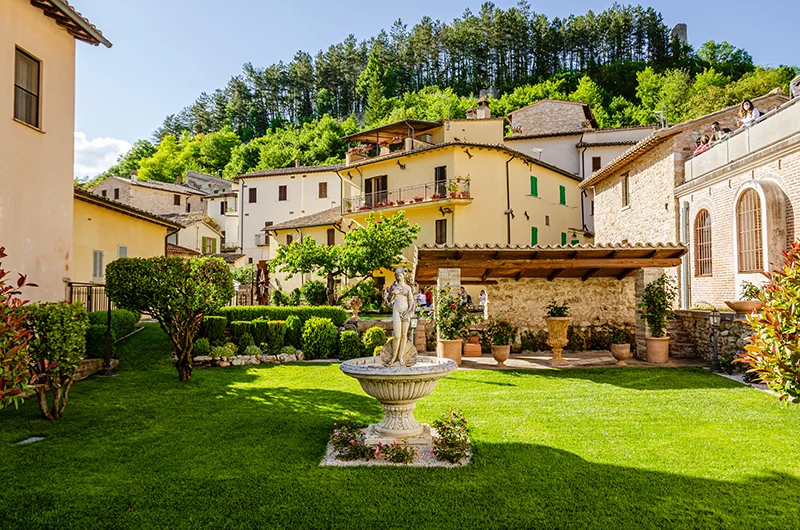
The best time to visit Rasiglia is during the spring and summer when the weather is mild, flowers are in bloom, and the village is at its most vibrant, or early autumn. However, the village has been gaining popularity in recent years, so some crowding is to be expected, especially on weekends and during local events. Planning ahead and visiting on weekdays can help ensure a more peaceful experience.
Rasiglia may be small, but its flowing canals, historic mills, and peaceful streets make it one of the most atmospheric villages in Umbria. A visit here is less about ticking off landmarks and more about immersing yourself in a place where water and history are deeply intertwined. Whether you stop for a few hours during a road trip or spend a leisurely afternoon, Rasiglia leaves a lasting impression to curious travelers.

